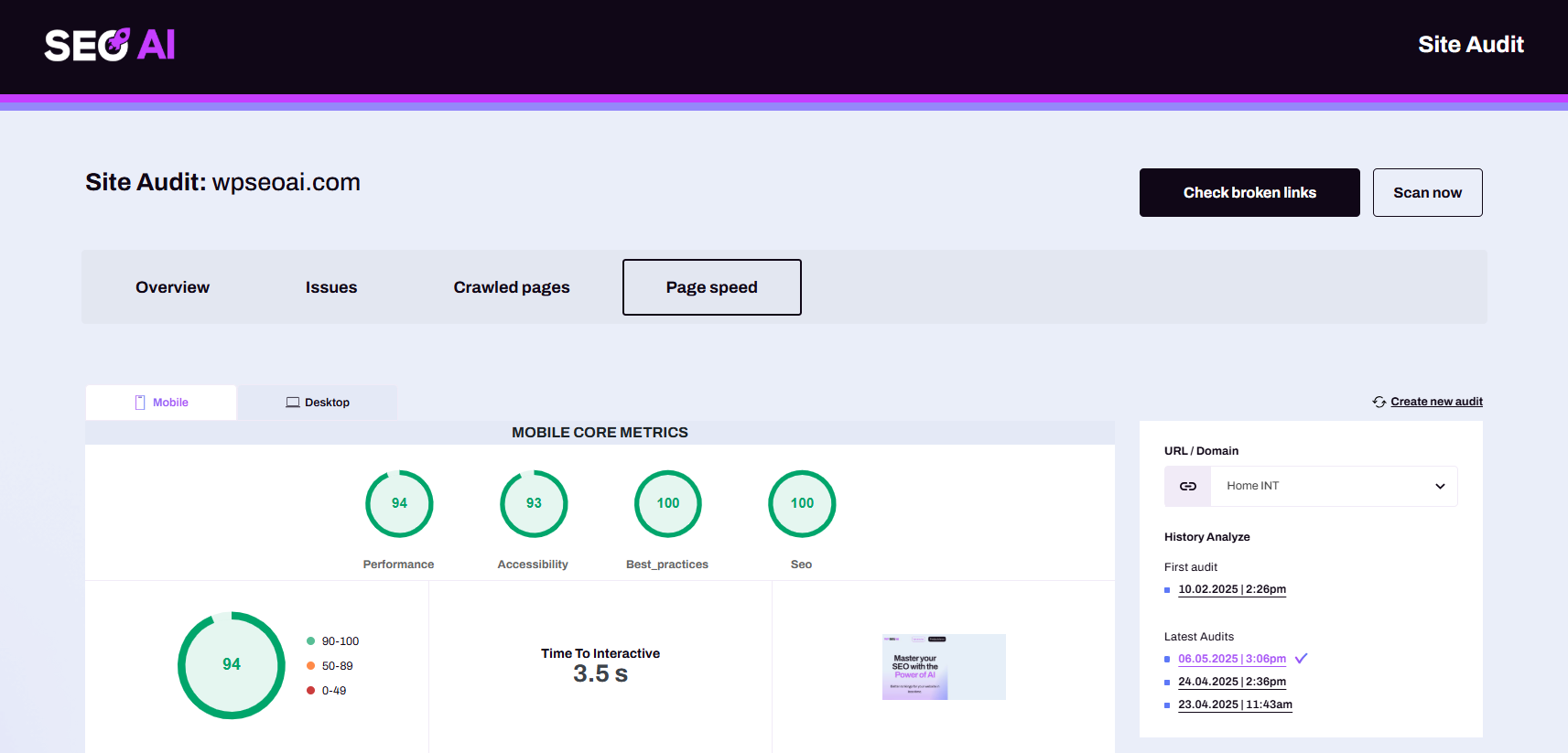Ever wondered why some websites seem to magically appear at the top of search results while others remain buried on page ten? The secret often lies not in the content you can see, but in the technical foundation running behind the scenes. Technical SEO—the unsung hero of digital marketing—is what makes your website both search engine and user-friendly.
If you’re a business owner navigating the complex world of digital marketing, understanding technical SEO isn’t just helpful—it’s essential. While creating quality content matters tremendously, even the most compelling writing won’t perform well if search engines can’t properly access, crawl, and understand your website.
In this comprehensive guide, we’ll demystify technical SEO, explore why it matters for your business, and provide ten actionable examples you can implement right away. You’ll discover how to identify technical issues that might be holding your website back and learn how to measure the impact of your improvements.
Ready to strengthen the technical foundation of your website and improve your search visibility? Let’s dive in.
Understanding technical SEO: The foundation of search visibility
Think of your website as a high-performance sports car. Content is the exterior design that attracts attention, while technical SEO is the engine that powers everything. Without a properly functioning engine, even the most beautiful car won’t get very far—and neither will your website.
Technical SEO refers to the process of optimizing your website’s infrastructure so search engines can efficiently crawl, index, and render your pages. It’s the behind-the-scenes work that ensures search engines can access, understand, and properly evaluate your content.
Why should you care about this technical side of SEO? Because search engines like Google are essentially sophisticated computer programs—they have specific requirements for how they access and process information. When your website meets these requirements, you remove barriers between your content and potential visitors.
Our learning objectives for this article are straightforward:
- Understand what technical SEO encompasses and how it differs from other SEO aspects
- Recognize why technical optimization matters for your business website
- Identify common technical SEO issues and opportunities
- Learn how to implement and measure technical improvements
By the end of this guide, you’ll have a clear understanding of how technical SEO serves as the critical foundation for your entire digital marketing strategy.
What is technical SEO and why does it matter for your business?
To fully appreciate technical SEO, we need to understand how it fits within the broader SEO landscape.
SEO typically breaks down into three main categories:
- On-page SEO: Optimizing individual page content, including keywords, headers, meta descriptions, and content quality
- Off-page SEO: Building external signals like backlinks, social mentions, and other factors outside your website
- Technical SEO: Optimizing website infrastructure for crawling and indexing by search engines
While on-page and off-page SEO focus on content and external validation, technical SEO ensures search engines can access, understand, and properly evaluate your website’s content in the first place.
Technical SEO isn’t about impressing your visitors directly—it’s about removing the barriers that might prevent them from finding you at all.
For business owners in the digital marketing space, technical SEO matters for several crucial reasons:
- Visibility: Even exceptional content won’t rank if search engines can’t properly crawl and index it
- User experience: Many technical factors (like page speed) directly impact how visitors experience your site
- Conversion optimization: Faster, more accessible websites typically convert visitors at higher rates
- Competitive advantage: Many businesses neglect technical SEO, creating an opportunity for those who don’t
Have you ever abandoned a website because it loaded too slowly? That’s just one example of how technical SEO directly impacts user behavior—and consequently, your bottom line.
As SEO and SEM strategies evolve, technical optimization has become increasingly important. While Google’s algorithms grow more sophisticated in understanding content, they still rely on technical signals to evaluate website quality and relevance.
How does technical SEO affect website performance?
Technical SEO impacts your website’s performance in two critical ways: how search engines interact with your site and how users experience it. Let’s examine these relationships more closely.
Search Engine Interaction
For search engines to display your content in results, they must first:
- Crawl your website (discover your pages)
- Index your content (store and organize it in their database)
- Rank your pages (determine where they should appear in search results)
Technical SEO issues can create roadblocks at any stage of this process. For example:
- Poor site structure might prevent crawlers from discovering important pages
- Missing or improper indexing directives might exclude valuable content from search results
- Slow-loading pages might receive ranking penalties, regardless of content quality
The more efficient you make this process for search engines, the better your chances of achieving high rankings.
User Experience Factors
Many technical SEO elements directly impact how users experience your website:
- Page speed: Faster pages lead to lower bounce rates and higher conversion rates
- Mobile responsiveness: Properly optimized mobile experiences are essential in today’s mobile-first world
- Site security: HTTPS encryption builds user trust and is a ranking factor
- Navigation structure: Logical site architecture helps users find what they’re looking for
These technical elements create the foundation for positive user experiences. And since Google increasingly uses user experience signals in ranking algorithms, they’ve become doubly important.
The beauty of technical SEO is that improvements often benefit both search engines and users simultaneously. For instance, implementing structured data markup helps search engines understand your content better while potentially earning you enhanced search results that attract more clicks.
As AI increasingly influences content creation, the technical foundation of your website becomes even more critical for standing out in search results.
10 powerful technical SEO examples to implement today
Let’s explore ten practical technical SEO improvements you can implement on your website, along with actionable advice for each:
1. Site Speed Optimization
What: Reduce page load times to improve both user experience and search rankings.
How: Compress images, minimize CSS/JavaScript, leverage browser caching, and consider a content delivery network (CDN). Use Google’s PageSpeed Insights to identify specific opportunities for your site.

2. Mobile-First Optimization
What: Ensure your website performs flawlessly on mobile devices.
How: Implement responsive design, optimize tap targets, ensure text is readable without zooming, and eliminate horizontal scrolling. Test your site using Google’s Mobile-Friendly Test tool.
3. HTTPS Implementation
What: Secure your website with proper SSL/TLS encryption.
How: Purchase and install an SSL certificate, set up proper redirects from HTTP to HTTPS, and update internal links to use HTTPS. Check for mixed content warnings after implementation.
4. Structured Data Markup
What: Add schema markup to help search engines understand your content context.
How: Implement JSON-LD markup for your organization, products, events, reviews, or other relevant schema types. Test implementation using Google’s Rich Results Test.
5. XML Sitemap Optimization
What: Create and optimize XML sitemaps to help search engines discover your content.
How: Generate comprehensive XML sitemaps including all important pages, update them regularly, and submit them to Google Search Console. Ensure they exclude non-indexable pages.
6. Robots.txt Configuration
What: Guide search engine crawlers on how to interact with your pages.
How: Create or optimize your robots.txt file to block unnecessary crawling of duplicate or low-value pages while ensuring important content remains accessible.
7. Canonical Tags Implementation
What: Manage duplicate content by specifying preferred URL versions.
How: Add canonical tags to duplicate or similar pages pointing to the version you want indexed. Audit your site for unintentional duplicate content issues.
8. URL Structure Optimization
What: Create clean, descriptive URLs that are both user and search engine friendly.
How: Use short, descriptive URLs containing relevant keywords. Avoid unnecessary parameters, numbers, or special characters. Implement proper URL redirects when changing URL structures.
9. Site Architecture Improvement
What: Organize your website in a logical, hierarchical structure.
How: Ensure no page is more than three clicks from the homepage, use breadcrumbs for navigation, and implement a clear category/subcategory structure. Create internal linking strategies that guide users through related content.
10. Core Web Vitals Optimization
What: Improve specific user experience metrics that Google uses as ranking factors.
How: Focus on improving Largest Contentful Paint (LCP), First Input Delay (FID), and Cumulative Layout Shift (CLS). Use Chrome User Experience Report data in Google Search Console to identify specific issues.
Implementing these technical SEO elements isn’t just about pleasing search engines—they create better user experiences that lead to higher engagement and conversion rates. As you consider incorporating AI into your content strategy, remember that even the best AI-generated content requires solid technical foundations to perform well.
How to audit your website for technical SEO issues
Now that you understand the importance of technical SEO and specific elements to implement, let’s explore how to conduct an SEO audit to identify issues on your website.
Systematic Audit Approach
A comprehensive technical SEO audit typically follows these steps:
- Crawl your website: Use a crawling tool to identify structural issues
- Analyze search visibility: Check indexation status in Google Search Console
- Evaluate performance metrics: Assess page speed and Core Web Vitals
- Review mobile experience: Test responsive design and mobile usability
- Check security and accessibility: Verify HTTPS implementation and accessibility standards
- Examine structured data: Validate implementation of schema markup
- Prioritize issues: Rank problems by impact and implementation difficulty
Essential Audit Tools
Several tools can help you conduct a thorough technical SEO audit:
- Google Search Console: Monitor indexing, identify crawl errors, and track Core Web Vitals
- Screaming Frog SEO Spider: Crawl your website to identify technical issues
- Google PageSpeed Insights: Analyze loading performance and Core Web Vitals
- Mobile-Friendly Test: Verify mobile usability
- Rich Results Test: Validate structured data implementation
- Lighthouse: Comprehensive performance, accessibility, and SEO auditing
When conducting your audit, focus on identifying patterns rather than just individual issues. For example, if you find multiple pages with excessive load times, look for common elements that might be causing the problem across your site.
Prioritizing Technical Issues
Not all technical issues have equal impact. When deciding what to fix first, consider:
- Severity: How significantly does the issue impact visibility or user experience?
- Scope: How many pages are affected?
- Effort required: What resources are needed to implement the fix?
- Potential impact: What improvement can you expect after fixing?
For most websites, addressing crawlability and indexation issues should be the first priority, followed by performance improvements and enhanced structured data.
Remember that technical SEO audits shouldn’t be one-time events. Schedule regular audits (quarterly is often ideal) to catch new issues as they arise and ensure your implementation of fixes has been successful.
Measuring the impact of technical SEO improvements
After implementing technical SEO improvements, how do you know if they’re working? Let’s explore how to measure the impact of your efforts.
Key Performance Indicators for Technical SEO
Effective measurement begins with tracking the right metrics:
- Organic traffic: Changes in search-generated website visits
- Crawl stats: Improvements in how search engines crawl your site
- Indexation: Number of pages indexed by search engines
- Page speed metrics: Improvements in loading times and Core Web Vitals
- Bounce rate: Changes in user engagement after landing on your pages
- Conversion rate: Impact on goal completions from organic traffic
- Search visibility: Ranking improvements for target keywords
These metrics provide a comprehensive view of how technical improvements affect both search engine behavior and user experience.
Establishing Measurement Frameworks
To effectively measure impact, follow these steps:
- Benchmark current performance: Capture baseline metrics before making changes
- Set specific goals: Define what success looks like for each improvement
- Implement changes systematically: Make one change at a time when possible
- Allow for indexation time: Give search engines time to process your changes
- Compare before and after metrics: Analyze changes against your baseline
- Document results: Create clear reports to communicate impact
When measuring impact, remember that some technical improvements show immediate results (like page speed enhancements), while others (like site architecture changes) may take weeks or months to fully manifest in rankings and traffic.
The most persuasive measurements connect technical improvements to business outcomes. For example, don’t just report that page speed improved by 40%—show how that speed improvement reduced bounce rates by 15% and increased conversions by 8%.
As AI continues to influence SEO practices, the ability to measure and demonstrate the impact of technical optimizations becomes increasingly valuable.
Technical SEO mastery: Next steps for your digital marketing strategy
We’ve covered a lot of ground in this guide to technical SEO. Let’s recap the key points and explore how to integrate technical SEO into your broader digital marketing strategy.
Key Takeaways
- Technical SEO forms the foundation that allows your content to be discovered and properly evaluated by search engines
- Improvements in technical elements benefit both search visibility and user experience
- Regular technical audits help identify issues before they significantly impact performance
- Measurement should connect technical improvements to business outcomes
- Technical optimization is an ongoing process, not a one-time project
Integration with Broader Strategy
To maximize the impact of your technical SEO efforts:
- Create technical and content calendars that align: Coordinate technical improvements with content initiatives
- Build cross-functional teams: Ensure developers, content creators, and marketers collaborate on technical SEO
- Establish technical standards: Create guidelines for new content and site changes
- Develop a testing culture: Regularly test technical changes for impact on both rankings and user metrics
- Stay informed about algorithm changes: Keep abreast of how search engines evolve their technical requirements
The most successful digital marketing strategies treat technical SEO not as a separate initiative but as an integrated foundation that supports content, social, email, and paid advertising efforts.
Continuous Improvement
Technical SEO isn’t something you “complete”—it’s an ongoing process of refinement and adaptation. Search engines constantly evolve their algorithms, and new technologies emerge that affect how websites should be optimized.
Schedule quarterly technical reviews, stay connected to SEO news sources, and consider working with technical SEO specialists for complex implementations.
Remember that technical excellence alone isn’t enough—it must support high-quality, relevant content that meets user needs. The combination of solid technical foundations and exceptional content creates the conditions for sustainable organic search success.
By understanding and implementing the technical SEO practices we’ve discussed, you’re not just improving your search visibility—you’re creating a better experience for your visitors and setting your digital marketing strategy up for long-term success.
What technical SEO element will you implement first? Whatever you choose, remember that even small improvements can yield significant results when they remove barriers between your content and the audiences searching for it.






